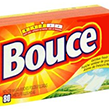Slate
Blackcurrant
Watermelon
Strawberry
Orange
Banana
Apple
Emerald
Chocolate
Marble
Slate
Blackcurrant
Watermelon
Strawberry
Orange
Banana
Apple
Emerald
Chocolate
Marble

Virginia Tech STAR rating system being developed for hockey helmets
By
JR Boucicaut, in Ice Hockey Equipment